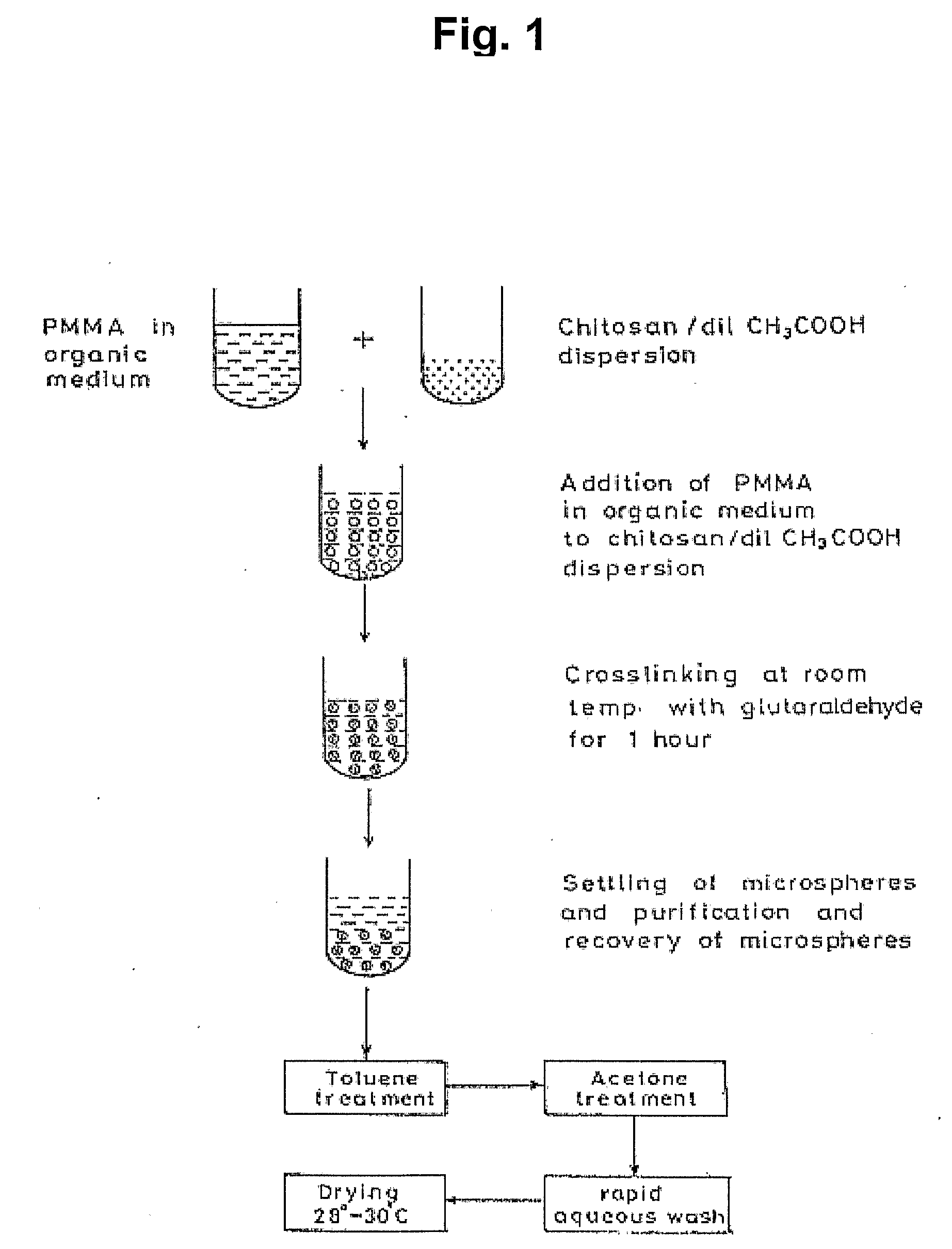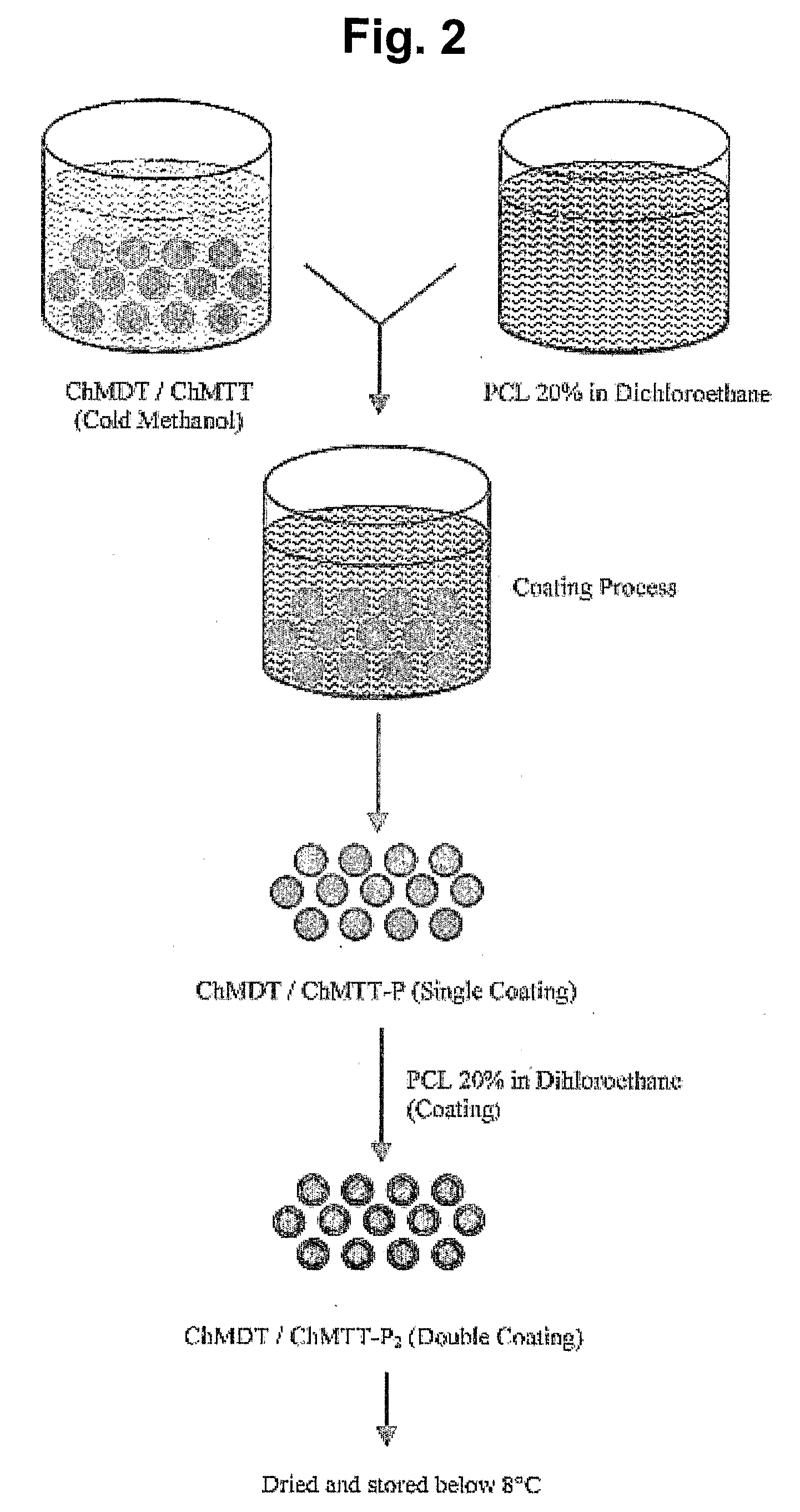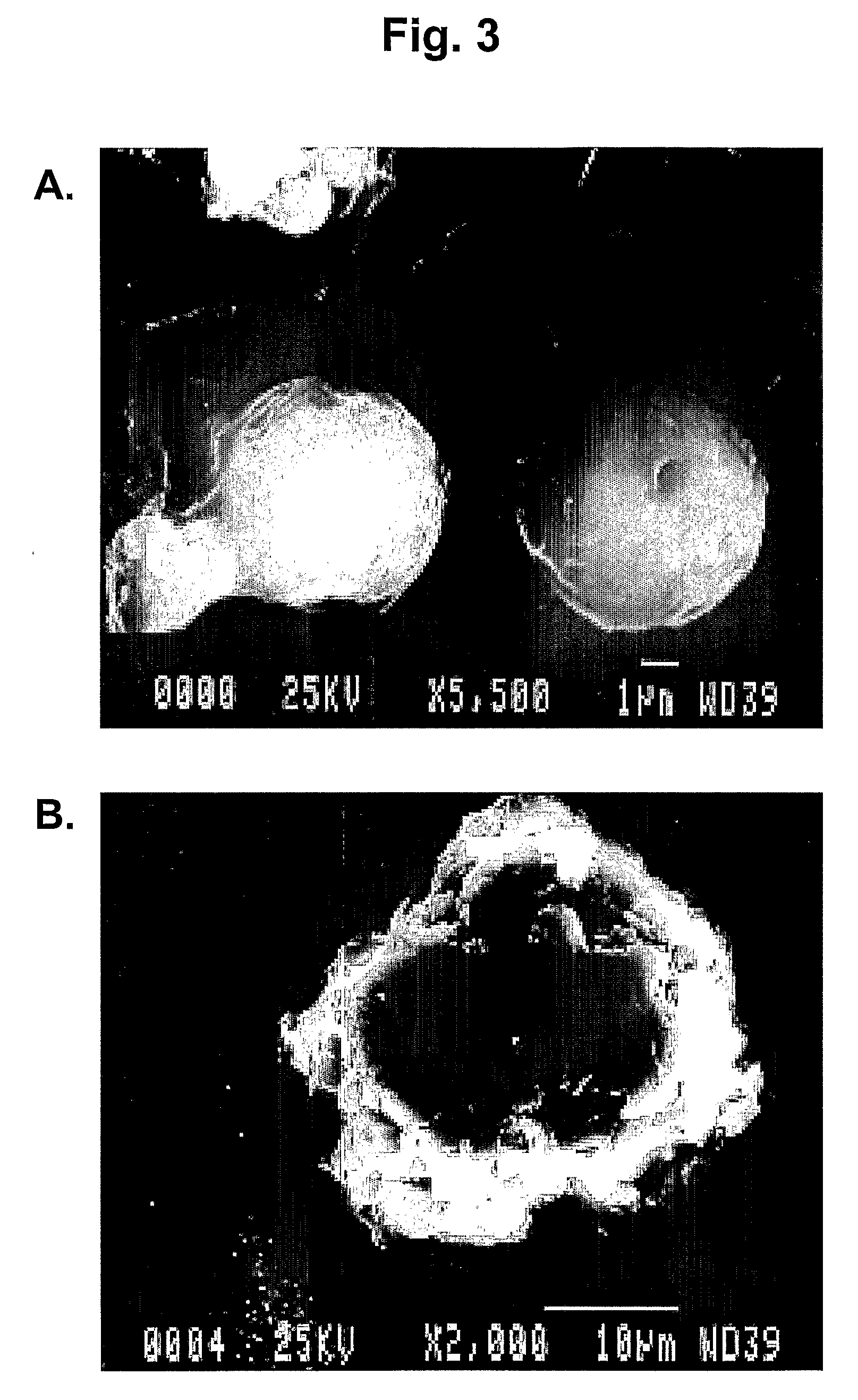Microparticles and Nanoparticles for the Transmucosal Delivery of Therapeutic and Diagnostic Agents
a technology of microparticles and nanoparticles, applied in the direction of peptide/protein ingredients, extracellular fluid disorder, metabolic disorder, etc., can solve the problems of general problems in developing non-invasive delivery systems for high molecular weight compounds, adverse effects of penetration enhancers and enzyme inhibitors on intestinal membranes or digestive processes, and improve the presentation of therapeutic agents. , the effect of improving the transport of agents
- Summary
- Abstract
- Description
- Claims
- Application Information
AI Technical Summary
Benefits of technology
Problems solved by technology
Method used
Image
Examples
example 1
Synthesis of Chitosan Microspheres
[0174]Bovine Serum Albumin (BSA) was chosen as a model protein because it is well characterized, readily soluble in water, and large in size (molecular weight=68,000 Dalton). BSA (Sigma, USA), polycaprolactone (Aldrich, USA), methyl methacrylate (MMA)(SRL, India) were used in the polymerization studies. Chitosan (Sigma, USA), Glutaraldehyde 25% (Flukon, AG) were used in the preparation of microspheres. An exemplary general method of preparing chitosan microspheres is diagrammed in FIG. 1. A 5 ml solution of 0.05 molar acetic acid containing 2% chitosan solution was dispersed in 20 ml of 10% poly methyl methacrylate (PMMA) solution (toluene:chloroform, 1:1, v / v) by stirring at 8000 rpm, using a standard stirrer.
[0175]After 5 minutes of dispersion, 7.5 ml of glutaraldehyde-saturated toluene was added to the chitosan solution to induce cross-linking while stirring at 8000 rpm. The stirring was continued for 3 minutes after the addition of glutaraldehyd...
example 2
Synthesis of Chitosan Nanospheres
[0177]Chitosan nanospheres were prepared by using similar polymer dispersion techniques as described above for the preparation of chitosan microspheres, except for a few changes in experimental conditions. These changes include use of 0.5% chitosan in 0.05 M acetic acid. Other concentration ranges of chitosan such as, for example, 0.2-2.0% can also be used. The poly methyl methacrylate (PMMA) concentration used was 20%. The concentration of PMMA can vary depending upon the particle size. For example, 25% PMMA can be used to obtain smaller nanospheres. The stirring speed was 20,000 rpm. The stirring speed can vary between 5000-25000 rpm depending upon the desired particle size, with greater speeds yielding smaller particles. The glutaraldehyde-saturated toluene used for cross-linking was 7.5 ml. The chitosan nanospheres were centrifuged at 10,000 rpm after acetone washes and dried under vacuum at room temperature. The dried nanosphere powder was store...
example 3
Loading of Chitosan Microspheres with Therapeutic Agents
[0178]Proteins were incorporated into chitosan microspheres by two methods, namely by swelling (indirect) or during preparation (in situ or direct). In the exemplary method below, BSA was used as a model protein.
[0179](a) Direct Method: A 2% solution of chitosan in aqueous acetic acid (0.05M) containing various quantities (5 mg, 10 mg, 25 mg, 50 mg) of BSA was dispersed in a 10% PMMA solution by stirring as described herein under preparation of chitosan microspheres. Various quantities of BSA were used to monitor the in vitro release pattern of BSA from the microspheres under simulated conditions (e.g., at pH 7.4 to simulate intestinal pH). The microspheres were cross-linked with glutaraldehyde-saturated toluene as described herein. The BSA containing chitosan microspheres were retrieved after sedimentation by washing with toluene as described above in the microsphere preparation description. The microspheres were finally washe...
PUM
| Property | Measurement | Unit |
|---|---|---|
| Concentration | aaaaa | aaaaa |
| Responsivity | aaaaa | aaaaa |
| Hydrophobicity | aaaaa | aaaaa |
Abstract
Description
Claims
Application Information
 Login to View More
Login to View More - R&D
- Intellectual Property
- Life Sciences
- Materials
- Tech Scout
- Unparalleled Data Quality
- Higher Quality Content
- 60% Fewer Hallucinations
Browse by: Latest US Patents, China's latest patents, Technical Efficacy Thesaurus, Application Domain, Technology Topic, Popular Technical Reports.
© 2025 PatSnap. All rights reserved.Legal|Privacy policy|Modern Slavery Act Transparency Statement|Sitemap|About US| Contact US: help@patsnap.com



